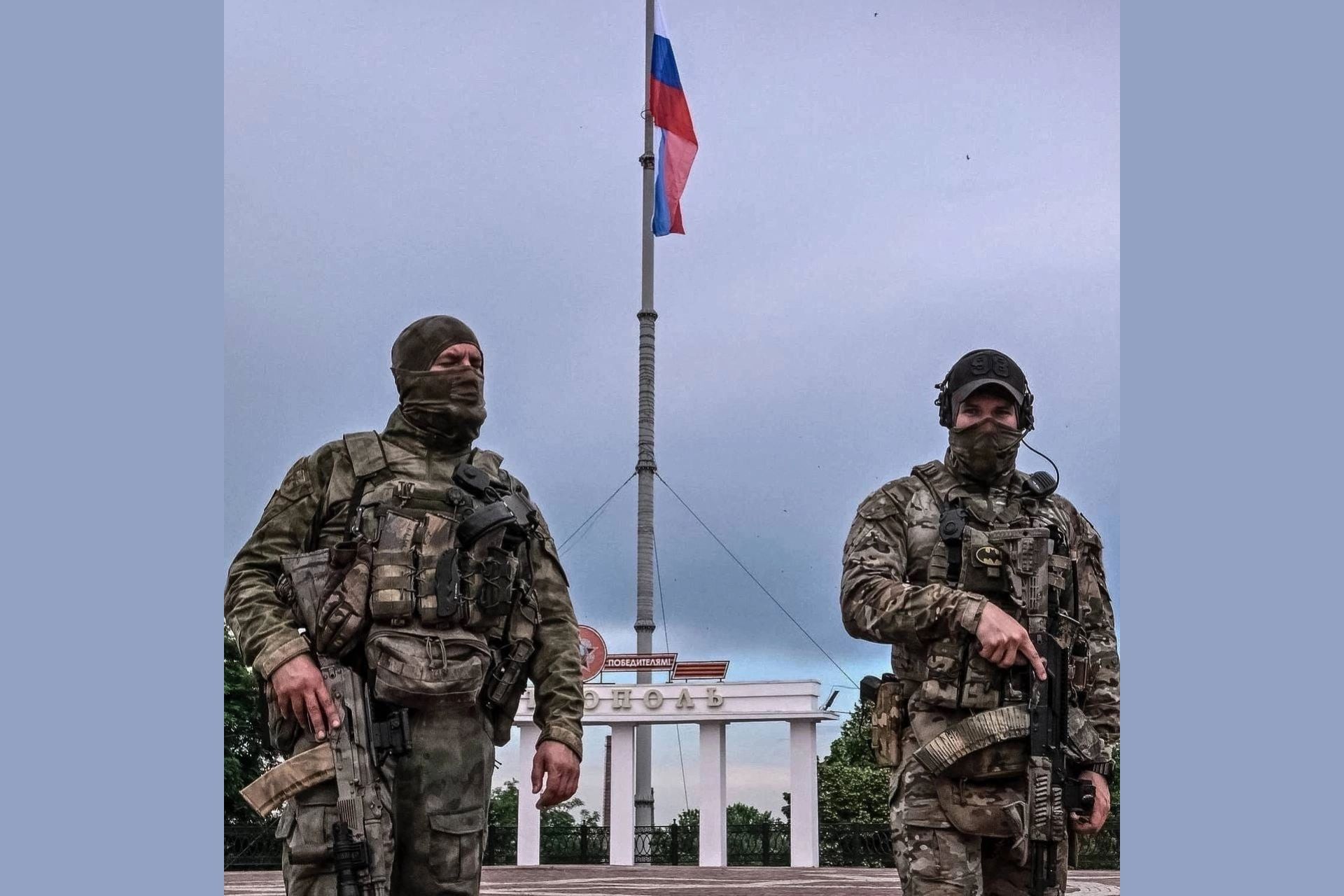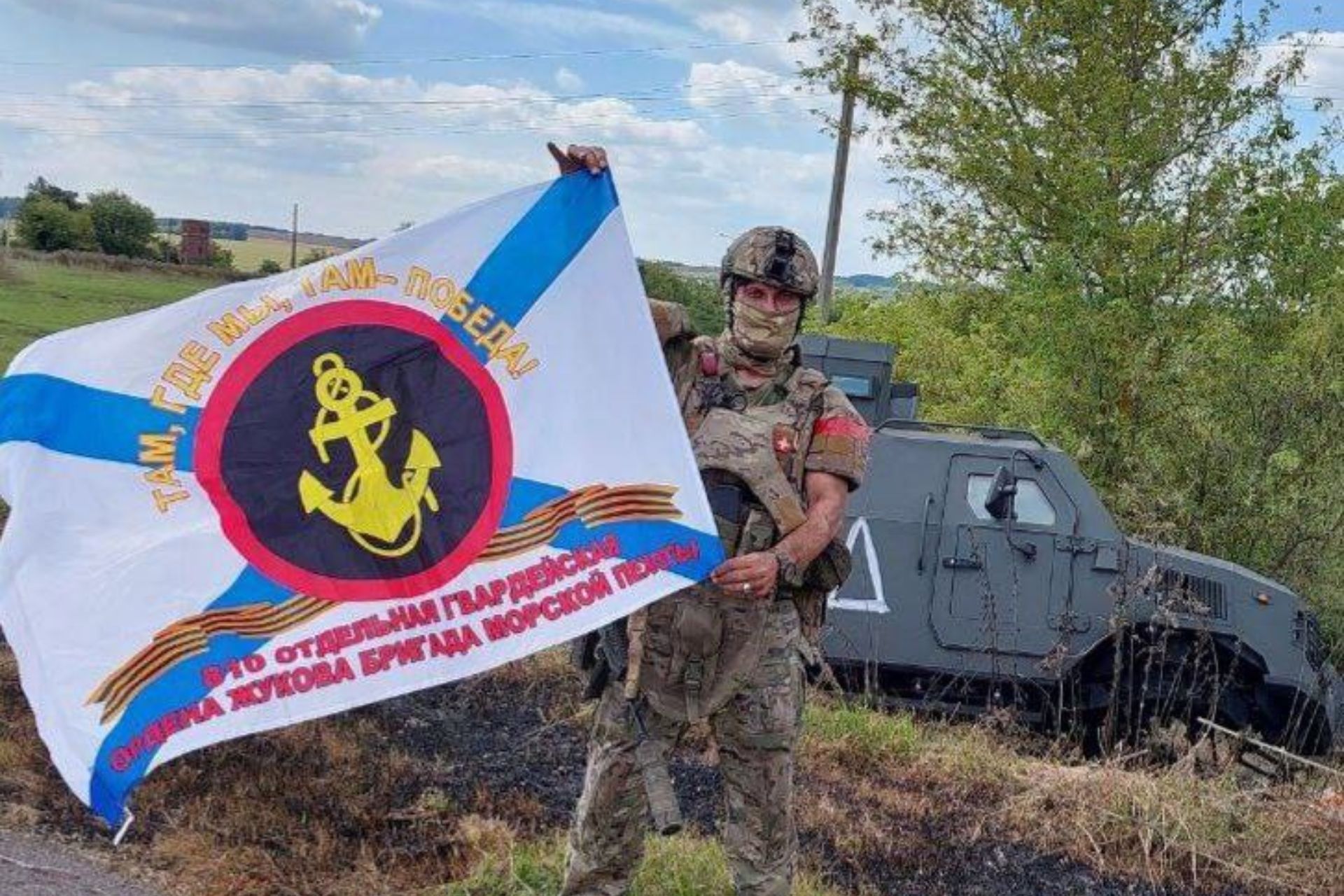Breaking News
FOCUS | Why Russia struggle to halt Ukraine’s breakthrough in Kursk region.
After three weeks of fighting, Russia still struggles to dislodge Ukrainian forces from the Kursk region, a surprisingly slow and muted response to the first occupation of its territory since World War II. It all boils down to Russian manpower and priorities.
Follow Army Recognition on Google News at this link

53 separate mechanized brigade named after Prince Volodymyr Monomakh drills night shooting.(Picture source: Ukraine MoD)
While the bulk of its military offensives are taking place in Ukraine, the Kremlin appears to currently lack sufficient reserves to drive out the forces from Kiev. President Vladimir Putin does not seem to regard the attack—or at least, does not appear to regard it—as a sufficiently serious threat to justify withdrawing troops from the Donbass region in eastern Ukraine, his primary target. Thus, it can be stated that Putin is focused on the collapse of the Ukrainian state, which, he believes, will automatically render any territorial control unnecessary.
Putin's Priorities
Several months after launching the large-scale invasion in 2022, Putin annexed the Ukrainian regions of Donetsk, Luhansk, Zaporizhia, and Kherson to Russian territory, and their complete capture is an absolute priority. He stated in June that Kyiv must withdraw its forces from certain parts of these regions that it controls as a condition for peace talks, a demand that Ukraine rejects.
As it rallies its forces to face the Ukrainian incursion, Russia is doing everything it can to avoid pulling units from its own offensive in the Donbass. Russia currently believes it can contain the threat on its own soil without compromising its most important goal in Ukraine. As Ukrainian forces entered the Kursk oblast on August 6, Russian troops continued their slow advance around the strategic city of Pokrovsk and other parts of the Donetsk region.
Russia is very keen to continue its attacks on Pokrovsk and not to divert resources from Pokrovsk to Kursk. Unlike in Pokrovsk, where Ukrainian forces have built extensive fortifications, other parts of Donetsk still under Ukrainian control are less protected and could be much more vulnerable to Russian assault if Pokrovsk falls.
In his televised talks with officials from the Kursk region, Putin described Kyiv's incursion as an attempt to slow down the Russian campaign in Donetsk. He stated that the Russian advance in this region has only accelerated despite the events in Kursk.
To pressure Ukraine to meet its demands, Russia also launched a series of long-range strikes on the electrical grid. Monday's attack on energy facilities was one of the largest and most devastating of the war, involving over 200 missiles and drones and causing widespread power outages. It highlighted the vulnerabilities of Ukrainian air defenses, which are intended to protect both front-line troops and infrastructure.

Servicemen of the Special Forces of the Russian Federation in Melitopol, Zaporozhye region, 2022 (Picture source: Russian MoD)
Minimizing the Incursion
Focused on the conquest of four regions of Ukraine, Putin has sought to downplay the significance of Kyiv's incursion into Kursk rather than trying to rally the population against a threat to the motherland. Faced with the reality of Russian territory occupation, the state propaganda machine has sought to divert attention from the obvious military failure by focusing on the government's efforts to assist more than 130,000 residents displaced from their homes.
State-controlled media have portrayed the attack on Kursk as proof of Kyiv's aggressive intentions and further evidence that Russia was justified in invading Ukraine on February 24, 2022. Open sources suggest that even though many residents of Kursk might be angry at the Kremlin, the general national sentiment could actually be in favor of the authorities. Politically, although this strikes a blow to the Kremlin's reputation, it is unlikely to trigger a significant rise in social or political discontent among the population. In fact, the Ukrainian attack might actually lead to a rallying around the flag and a rise in anti-Ukrainian and anti-Western sentiments.

The soldiers of the 32nd separate mechanised brigade are training on the MK-19, US made grenade launcher. ( Picture source: Ukrainian MoD )
A Limited Response from the Kremlin
The Ukrainian Chief of General Staff, General Oleksandr Syrskyi, stated that his forces controlled nearly 1,300 square kilometers (about 500 square miles) and around 100 localities in the Kursk region, a claim that has not yet been independently verified. Currently, it seems to be an advance into an area of about 1,000 square kilometers, with the control of this area being relative. The situation in Kursk is constantly evolving, unlike the static front lines in Donetsk, and Ukrainian units could traverse the region without establishing a lasting presence in many of the towns they claim.
Observers estimate that Russia does not have sufficiently well-coordinated resources to drive out Ukrainian forces in Kursk.
Until the Kursk incursion, Putin had refrained from using conscripts to avoid public backlash. Young conscripts, called up for a mandatory one-year service, have served far from the front, and those deployed to protect the border in the Kursk region have become easy targets for Ukraine's seasoned mechanized infantry units. Hundreds of them have been captured, and 115 were exchanged for Ukrainian soldiers over the weekend. Commentators have noted that Putin is also hesitant to call up more reservists, fearing internal destabilization like what occurred when he ordered a highly unpopular mobilization of 300,000 people in response to a Ukrainian counter-offensive in 2022. Hundreds of thousands fled Russia to avoid being sent to fight.
Since then, the Kremlin has bolstered its forces in Ukraine with volunteers attracted by relatively high salaries, but this influx has decreased in recent months. Tens of thousands of soldiers would be needed to completely dislodge the Ukrainian force, estimated at 10,000 men, who were using the dense forests of the region as cover.
Clearly lacking the resources for such a large-scale operation, Russia has for now focused on containing deeper Ukrainian advances by blocking roads and targeting Kyiv’s reserves – tactics that have been partially successful. Meanwhile, Ukraine has confounded the Russian military by destroying bridges over the Seym River, disrupting the logistics of some Russian units in the area and creating conditions for establishing a control pocket. Thus, Ukrainian troops could use the river to create a buffer zone.

Serviceman of the 810th Separate Guards Naval Infantry Brigade of the Black Sea Fleet of the Russian Federation, Kursk oblast, front of Ukrainian abandonned vehicle ( Picture source: Russian fighters )
The Risks for Ukraine
By seizing a part of Russian territory, Ukraine has embarrassed the Kremlin and reshaped the battlefield. However, diverting some of the country's most effective forces from the east is a risky gamble for Kyiv. This carries considerable risks, especially if an attempt to overextend Russian forces leads to overstretching the smaller or less experienced Ukrainian forces. An attempt to gain a foothold in Kursk would further extend the front line by more than 1,000 kilometers, complicating matters for the Ukrainian forces, who are understaffed and under-armed. Defending positions within Russia would pose serious logistical problems, with extended supply lines becoming easy targets.
The Russian system is very hierarchical and rigid, so it always takes a long time for them to adapt to a new situation, but we will have to see how Ukraine can withstand it, once Russia has adapted and comes in force. It is foreseeable that the gamble is one of a speed contest between the Russian reaction time before an inevitable regaining of the upper hand, and the preparation of new Ukrainian troops with international brigades, trained and equipped by various NATO nations.

53 separate mechanized brigade named after Prince Volodymyr Monomakh drills night shooting.(Picture source: Ukraine MoD)


























